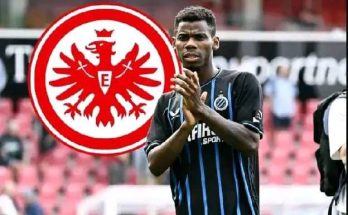Before the banners, before Duke basketball became synonymous with dominance in the NCAA, before Mike Krzyzewski was simply called “Coach K” by the world at large, there were players who laid the foundation for the dynasty to come. These players carried the program during its formative years, helped elevate it onto the national stage, and gave everything they had in pursuit of something bigger than themselves. One of those players was Phil Henderson. Though his name is not always mentioned among Duke’s most celebrated legends, his role was critical, his contributions immense, and his sacrifices significant. To understand Duke’s rise, one must understand Phil Henderson.
Henderson arrived at Duke in the mid-1980s, a time when the program was still fighting for respect on the national level. Mike Krzyzewski had been at the helm for just a few years, and while there were signs of promise, the Blue Devils were not yet considered an elite powerhouse. In 1986, the team made an impressive run to the national championship game but fell short. That run proved to be a turning point, and Phil Henderson, arriving shortly thereafter, was a central figure in building on that momentum.
Coming out of high school, Henderson was a McDonald’s All-American and a sought-after recruit, known for his smooth shooting stroke, athleticism, and court awareness. He chose Duke not just for its rising profile, but because he saw in Coach K a leader who could help him grow both as a player and as a man. What followed was a four-year journey marked by hard work, growth, perseverance, and leadership. While he never hoisted a championship trophy during his college career, Henderson was an essential bridge between the early years of promise and the championship era that would come shortly after his departure.
What set Henderson apart was not just his scoring ability, though he was often the team’s most consistent offensive weapon. It was his understanding of the game, his willingness to do the little things, and his deep commitment to the team’s success over personal accolades. In an era when college basketball was teeming with individual stars seeking a fast path to the NBA, Henderson stayed all four years at Duke. That choice alone speaks volumes about his values and dedication.
Henderson’s junior and senior years, in particular, saw him take on a leadership role both on and off the court. As younger players joined the team—including future stars like Christian Laettner and Bobby Hurley—Henderson was a stabilizing presence. He showed by example what it meant to be a Duke player: disciplined, tough, unselfish, and team-oriented. He often guarded the opposing team’s best perimeter player, took the clutch shots when necessary, and provided an emotional spark during critical moments. His signature moment came in the 1989 NCAA Tournament, when he scored 28 points in a thrilling win over Georgetown in the Elite Eight. It was a performance that underscored just how vital he was to Duke’s success.
The 1989 Final Four run, where Duke eventually lost to Seton Hall in the semifinals, was bittersweet for Henderson. It marked the third straight Final Four appearance for the Blue Devils, but also the third straight year they came up short. For Henderson and his fellow seniors, it was the end of a journey that never reached the mountaintop. But in hindsight, those years were far from a failure. In fact, they were foundational. Duke’s ability to get so close so often laid the groundwork for what was to come: a national championship in 1991, followed by another in 1992, and the emergence of Duke as a college basketball dynasty.
What Phil Henderson gave to the program was not just points or wins. He gave it legitimacy. He helped prove that Duke belonged in the conversation with college basketball’s bluebloods. Without Henderson and his peers pushing the team to multiple Final Fours, there is no telling whether later stars would have seen Duke as a destination. Laettner, Hurley, and Grant Hill might not have chosen to play in Durham had players like Henderson not proven that Duke could compete on the biggest stages. In that way, Henderson’s legacy is imprinted not just in the record books, but in the very DNA of the Duke program.
Off the court, Henderson was known as a thoughtful and well-liked teammate. He balanced competitiveness with humility, and those who knew him spoke of his intelligence and quiet confidence. He wasn’t the most vocal leader, but when he did speak, others listened. Coach Krzyzewski often praised Henderson’s maturity and understanding of the team’s mission. That kind of trust between coach and player was crucial in shaping Duke’s culture—one that emphasized accountability, family, and a relentless pursuit of excellence.
Henderson’s post-college journey mirrored the complexity of many athletes who give so much to their sport. He was drafted by the Dallas Mavericks in the second round of the 1990 NBA Draft, but he never carved out a lengthy career in the league. He played professionally overseas and in smaller U.S. leagues, but his life after basketball became quieter, more introspective. In many ways, his story reflects the path of countless college athletes who give everything they have to their team, graduate, and then recede from the spotlight. But to say Henderson was forgotten would be inaccurate—especially among Duke fans and teammates who understood his impact.
When Phil Henderson passed away in 2013 at the age of 44, the Duke basketball community mourned deeply. Coach K called him one of the most important players in the history of the program. His former teammates spoke of his competitive fire, his leadership, and his commitment to excellence. They remembered not just the dunks or the jumpers, but the grit, the sacrifices, the practices, and the locker room talks. Henderson’s memory endures not because of any single game or stat line, but because he exemplified what Duke basketball was striving to become.
The irony of Henderson’s legacy is that it exists in the shadows of the banners he helped make possible. Duke’s first national championship came in 1991, just one year after his graduation. Many of the lessons, habits, and standards that fueled that title run were honed during Henderson’s tenure. The champions stood on the shoulders of those who came before, and Henderson’s shoulders carried much of the weight.
In today’s college basketball world—dominated by one-and-done stars and shifting allegiances—it’s easy to overlook players like Phil Henderson. His story lacks the glamour of an NBA All-Star career or a national title celebration, but it is exactly the kind of story that deserves to be told. It’s a reminder that greatness is often cumulative, built over years of toil, sweat, and unrecognized effort. Henderson’s Duke career might not be framed by the glittering hardware of championship rings, but it is framed by something deeper: integrity, commitment, and the quiet pride of knowing you helped build something meaningful.
Before the banners hung in Cameron Indoor Stadium, before “Duke” became a brand in college basketball, Phil Henderson gave the program his heart. He competed with grace, led with dignity, and left behind a blueprint for how to lead. His name might not be the first one fans recall when talking about Duke legends, but for those who watched him play, for those who shared the court with him, and for those who understand the journey from potential to powerhouse, Phil Henderson’s legacy is undeniable.
He was a bridge between eras, a mentor in motion, a scorer with soul, and a leader without ego. He gave Duke four years of brilliance, and in return, the program took his example and soared. Before the banners, there was Phil Henderson. And without him, there might not have been any banners at all.



